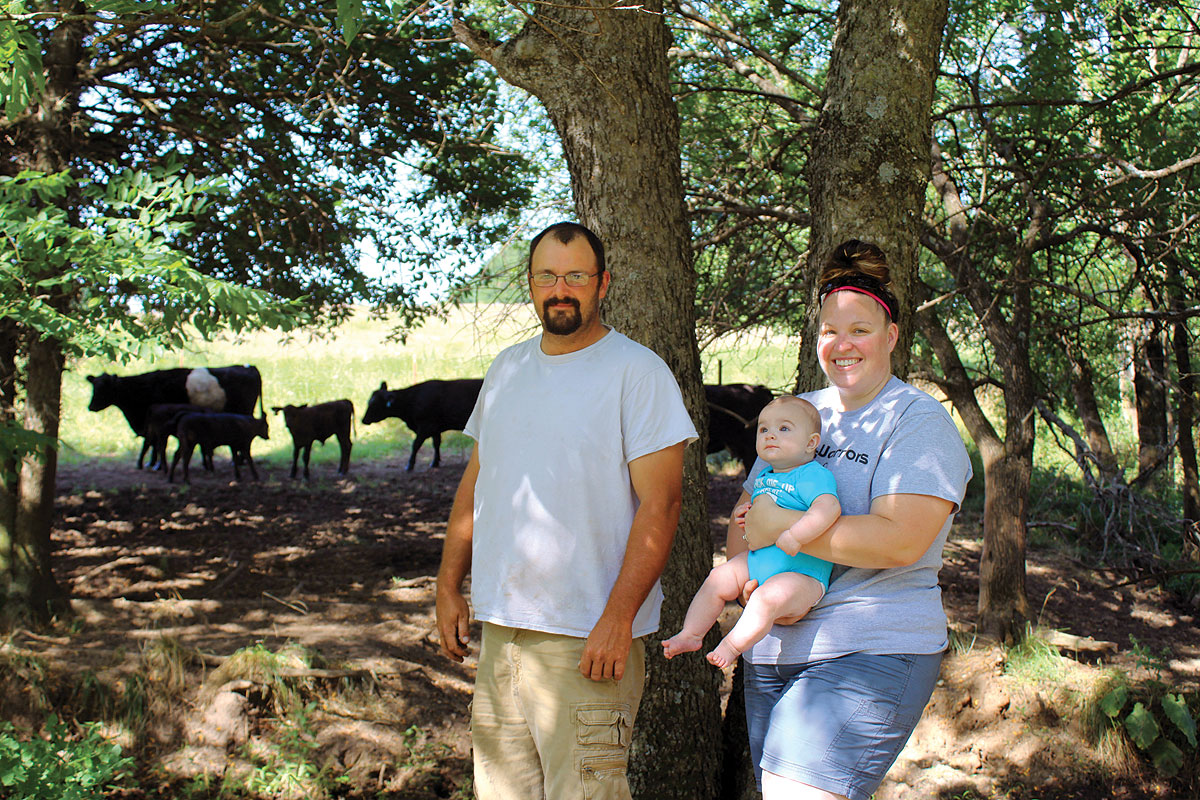
Buck Ridge Limousin, located near Rogersville, Mo., in Greene County, is owned by Mark Haden. He calls his son, Logan, the ranch manager and said he is an integral part of the operation. “Logan has enjoyed it ever since we started. He’s involved in every aspect,” Mark said.
They have lived on this farm for 11 years and bought their first Limousin cattle 10 years ago at a dispersal sale in Tennessee.
Mark was first attracted to the Limousin breed because of, “the muscle in the bulls. We like their composition from the muscling aspect. Obviously the prominent breed out there is Angus. They’ve done a real good job of marketing their cattle. But some of the Angus bulls don’t have enough muscle.”
He explained, “We like a bull that looks like a bull. That’s why we started with Limousin.” He conceded, “The market has become a lot more open to the idea of hybrid genetics. So we’ve been crossing Angus with the Limousin. The market seems good for it and you get some of the benefits of hybrid vigor.”
Mark now has Limousin and Lim-Flex (a hybrid Limousin/Angus cross). But 60 percent of his herd is still purebred Limousin.
He had commercial cattle first, and then decided if he was, “going to have a few cows, why not have nice cows?” Mark explained that once he decided to be a purebred breeder, he didn’t want to do it halfway. He said, “I don’t think it works very well. If you’re going to try to sell something to people, you need to have a quality product.”
For Mark, doing it right means having good genetics, using AI and embryo transplanting.
“With a purebred herd, you sell seedstock,” Mark said. He added, “You produce seedstock that others purchase, and that is primarily bulls to use for herd sires in the commercial breeds. For the amount of time we’ve been in it, we’ve had a lot of repeat business.”
In Mark’s opinion the Limousin breed doesn’t have one particular outstanding feature. He explained, “I think it’s wrapping the whole package together. It’s not one feature, to me, because then they might have a real deficiency somewhere else. That one feature isn’t going to override it. We look for animals that are going to make somebody else happy and make them some money.” He added, “To me, you can’t just pick out one trait and say that’s what you’re after. You have to have the whole ball of wax.”
For Mark, the whole ball of wax includes a well-known pedigree, good EPD’s, good performance and eye appeal. He said, “We look for those traits in everything we do, because if any one isn’t there then they’re not what we’re aspiring to raise.”
Last year was the first year Mark did a lot of embryo transplants. He said, “We set all our cows up and hired someone from Oklahoma to put the embryos in for us. This year I’d say 70 of the 80 that we bred were either AI bred or embryo that we started out with. We clean up our AI’s and embryos with AI sires that we own here on the farm. Quality is what we’re after.”
Mark said the average birth weight for Limousin heifers is probably 65 to 70 pounds, and bulls average anywhere from 75 to 85 pounds.
Records are kept for 205-day adjusted weaning weight. He said, “Our bulls average better than 700 pounds. We’ve had a few that have been in the 860 pound range at 205 days, which is less than 7 months old. Our heifers probably average 630 to 650 pounds at 205 days.”
Part of the cows that he uses for embryo transplants are commercial cows. Instead of buying quality Limousin cattle, Mark bought some “pretty good commercial cows.” He added, “If they don’t take to the embryo then we’ll sell them commercially.”
Mark is a true believer in quality. He is also taking advantage of today’s technology to have a greater quantity of quality. He stated, “We flushed one of our best cows last year and got 22 embryos from her. Over her lifetime she would probably not produce as many calves as we got out of her that one year. You’re taking your best genetics, using the very best bull you can, and economically reproducing your best genetics.”
Grassroots Genetics primarily distributes Limousin semen. Mark feels his greatest accomplishment with his cattle is having two bulls listed with Grassroots and their semen is available. He expects to have two more bulls on the list by this fall. He said, “For a breeder our size, I think we’ve got to be doing something right.”







